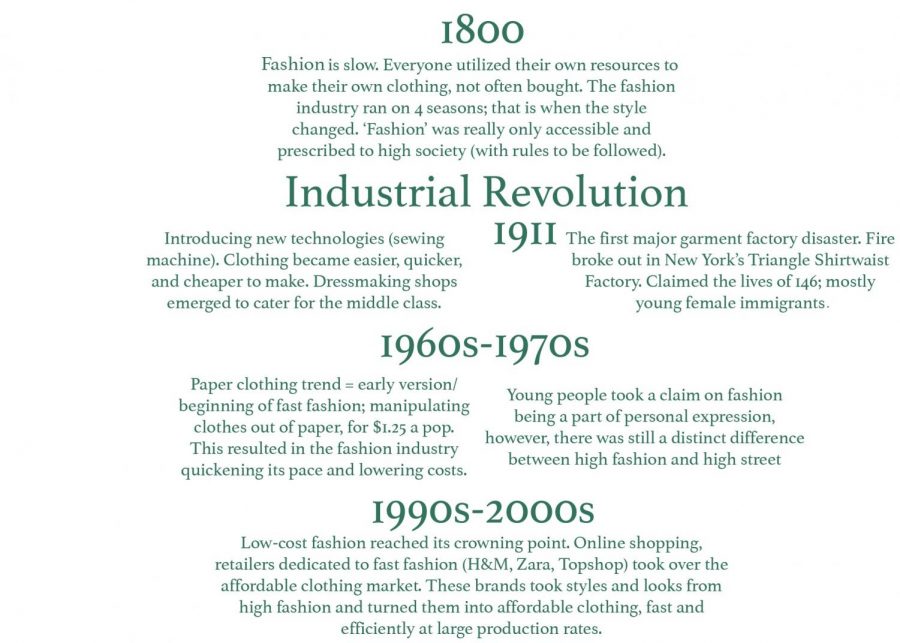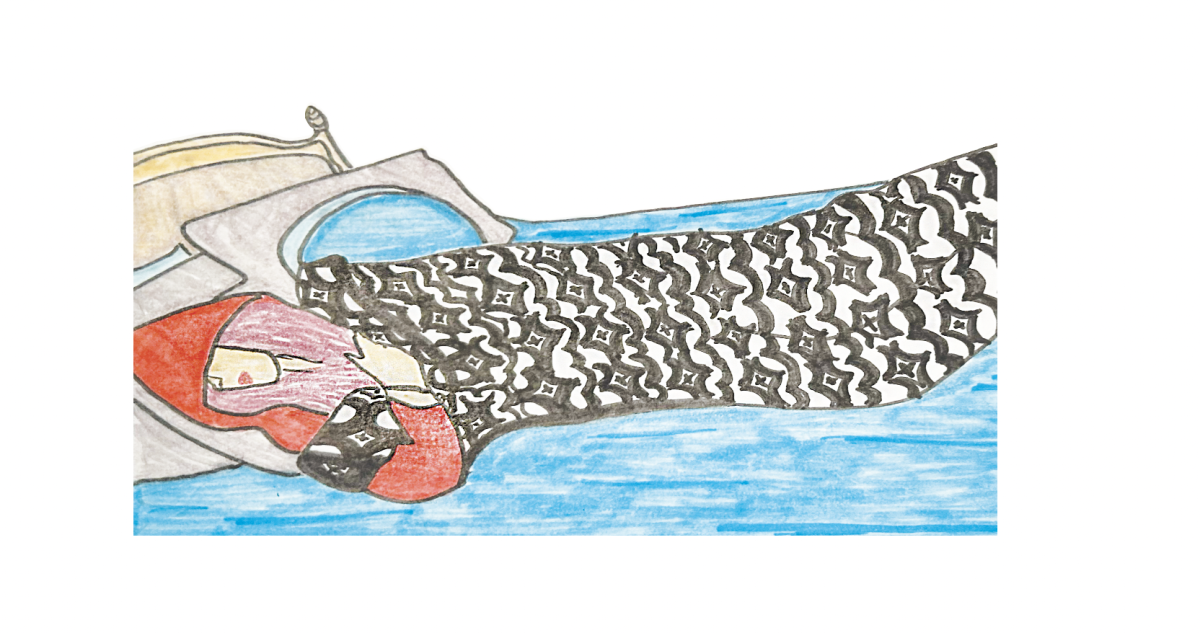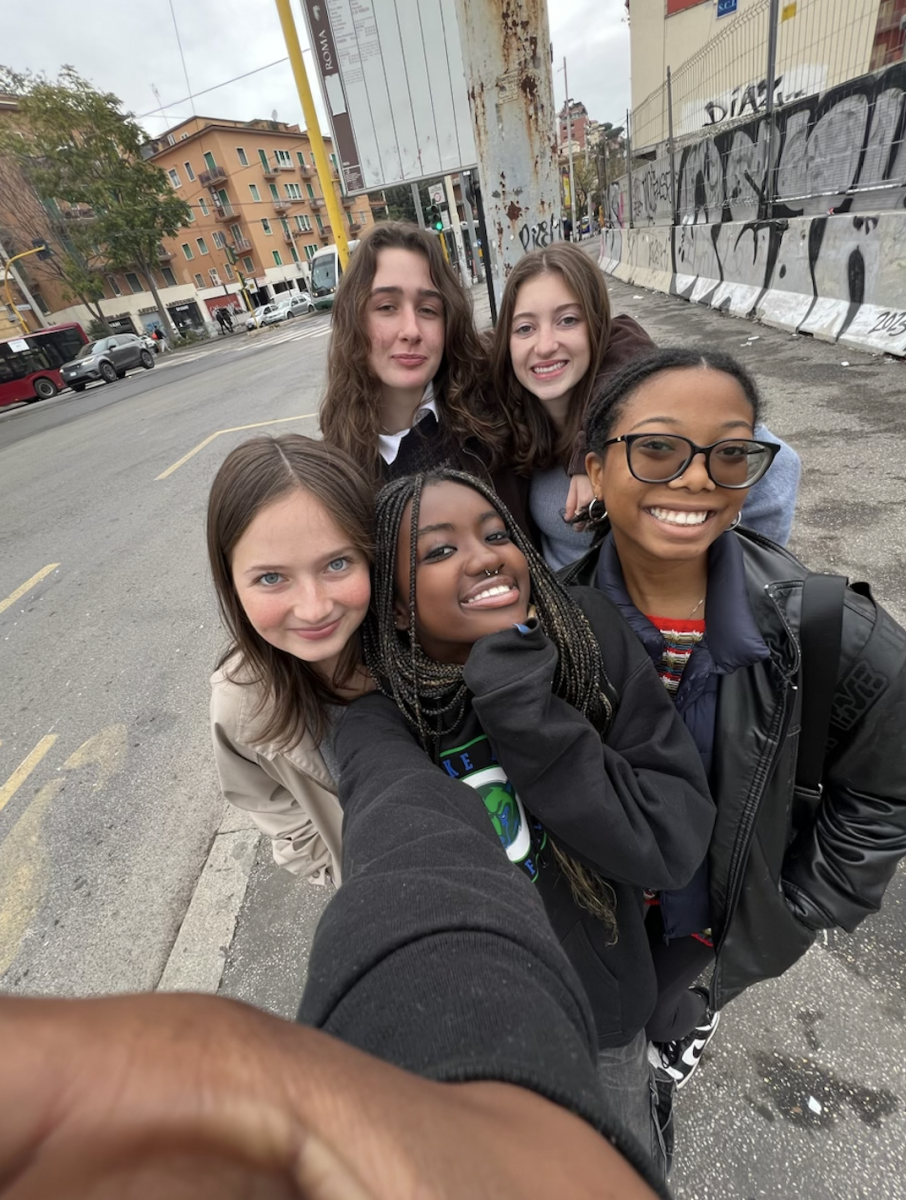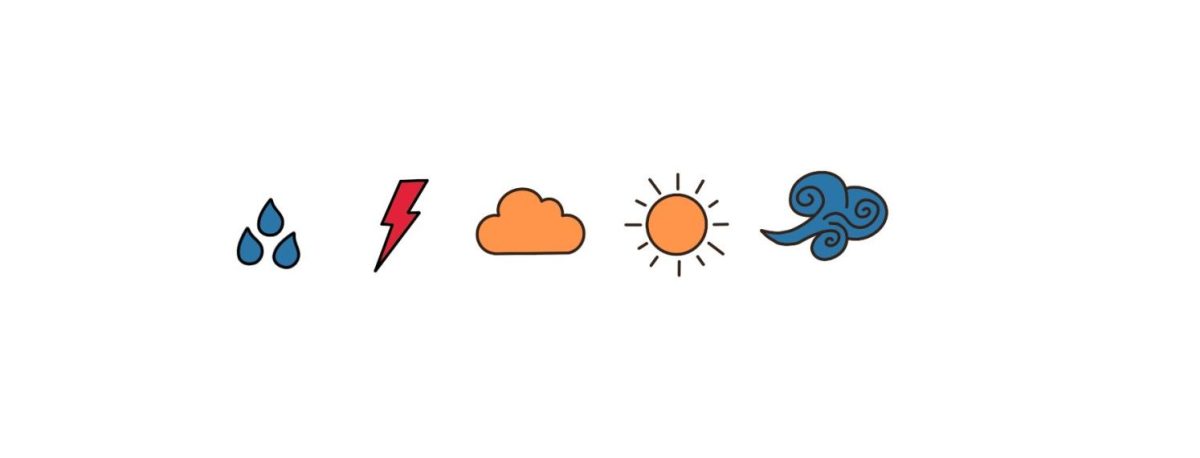Flashback to the year 1966: down the block and by the harbor, women confidently parade their colorful, paper-made shift dresses and mini skirts. Inspired by a campaign, the trend of garments made of paper napkins and plates arises. An unthinkable style that started it all. This voguish, inexpensive look changed the perception of fashion. Previously targeted for members of high society, now fashion forward styles are a necessity for the average person.
Industries have since begun to utilize a marketing method focused on rapidly producing high volumes of cheap on-trend clothing so that consumers can buy immediately purchase styles at the height of their popularity. Although this system grants us, consumers, the potential to replicate the looks of fashion icons we look up to, it also instills the idea that outfit repeating is a fashion faux pas, normalizing the social construct that relevancy goes hand in hand with what you wear. Additionally, this systems has a harmful impact on the environment, as the clothing industry is the second-largest clean water polluter globally.
Locally, fast fashion styles permeate high school communities. Although students purchase clothing from fast fashion retailers, the worldwide ramifications and reality of fast fashion do not appear to be universally understood. Ryan Ressemann ’21 says that “I have no clue what fast fashion is, so I don’t know how I should define that.” Price Glover ’24 also shares that he doesn’t know too much about fast fashion, but “I know it’s like fashion but it’s less sustainable and it takes away some of the artistry.” After giving some more context to my asking, both Ressemann and Glover had some input on the topic.
Glover says, “I think I definitely contribute to the trend. [I] don’t support it though. Obviously [because of] the environmental impact one, and ethical reasons as I know there are a lot of underpaid workers for that and I think it really is inauthentic to how fashion has evolved. The whole concept [of fashion] is to make things and build off of each other and be unique. I think instead of building off of that they copy other peoples ideas for profit off of whatever is trendy at the time.”

Mia Palladino ’21 says, “I myself tend to be very up to date in the fashion world, and often come across clothing that’s outrageously expensive whether it’s from like Gucci where a teenager like myself probably can’t afford it. So then sometimes I will look for pieces similar to it.”
She continues, “I definitely partake in fast fashion, but that being said I try to buy more expensive pieces that will last longer rather than buying cheaper pieces in bulk.” Ressemann offers a new perspective. He explains, “I get what that is now. I think that is a legitimate thing that I think has been normalized today. But as far as what I think of it, I am pretty neutral on it… I feel like there could be some problems with it based on how much they produce and if there is any waste of it. I get it from the business perspective.”
Students have their own unique perception of fast fashion. However, there is an overall consensus its unethical effects and practices. Despite this, students still contribute to the harmful effects of fast fashion by purchasing clothing from these retailers.







